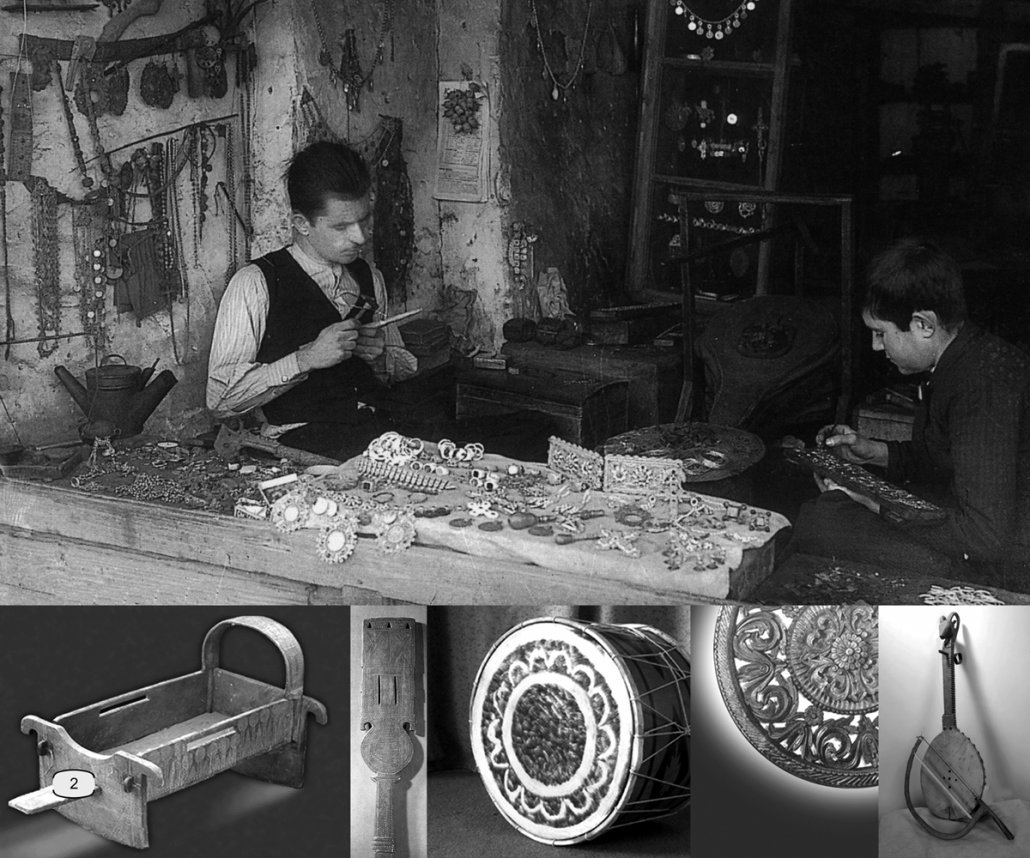HANDICRAFT
The artisanal handicraft in Shkodra is altogether an art, mastery, and a way of living. Through the years and decades, it has acquired remarkable and unique characteristics as a result of the current historical and cultural developments which determined its special characteristics always in accord with the local mentality , tastes, and needs of the residents of Shkodra and that of the Accursed Mountains.
Throughout its history of about 2500 years, the city of Shkodra has established and developed a lasting tradition in the fields of craftsmanship, by witch it has maintained, and still maintains, the individuality, the creative imagination, the tastes, and the artistic sensibility of this region. The heydays of craftsmanship in this city started in the middle of the 18-th century, and lasted until the 50-s and 60-s of the 20-th century, at which time Shkodra dominated over the other centers of the country. Close to 2500 shops were to be found in its market place. These shops were lined up according to the 80 different crafts and professions, where the folk masters bedecked the stone giving it different shapes, carved the wood making various ornaments, tempered the iron, embroidered unique traditional clothing with golden and silver threads, worked with skins of various kinds and embellished the armors of freedom fighters. Tailors and the very talented embroiderers produced with their hands amazing napkins and silk handiworks with interesting motifs.
In the museum there are about 500 artefacts, in a good conservation state: Textiles (complete costumes or elements of costumes, household furniture, such as carpets, curtains, tablecloths, bed covers, etc. An abundance of wool, natural silk, cotton, flax, was used to complete these processes, according to the traditional techniques, of course in an evolving process. It should be mentioned that they are distinguished for their rich decoration, originality, symbolism and colour. Especially rare values are to be found on the garments, full of colourful nuances of filigree. Similarly of great importance is the embroidery of silk, flax and cotton fabrics, handkerchiefs, sheets, etc.

